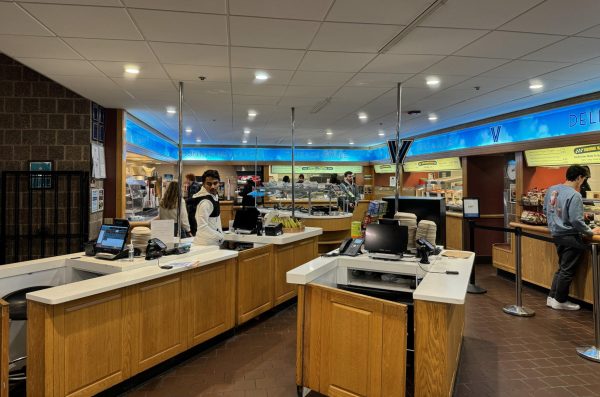Inaugural address hits hard issues
September 17, 2006
In a recent poll of 107 students and faculty members who attended the inauguration of Rev. Peter Donahue, O.S.A., new University president, students overwhelming agreed that Donohue’s speech hit the major issues facing Villanova in the post-Dobbin era.
Major points that highlighted Donohue’s address included such issues as the call for a higher cultural awareness and acceptance of different cultures and the enhancement of the arts climate on campus.
Eighty-nine percent of those surveyed agreed that Donohue touched on the University’s most pressing issues. The same survey also found that 84 thought that Donohue needs to continue the nationalization of the University by creating more buildings while still attempting to keep a small-campus atmosphere, compared with the 16 percent of people who felt that more construction might hurt the University’s reputation as a small, caring community.
The issue that grabbed the most attention, however, was Donohue’s assessment of the University’s commitment to diversity. Seventy-two percent of those surveyed agreed that the “Vanilla-nova” stereotype needs to go because it does not accurately portray the student body.
“Father Peter truly gets it,” said Terry Nance, assistant vice president in the Office of Multicultural Affairs. “Diversity is not about adding more black, brown, red and yellow faces to the landscape of the University community.
“It is about accepting and relishing the wonderful differences each of us possess and welcoming all of the racial and ethnic differences.”
“Bringing up diversity is important in making Villanova such an exclusive institution,” sophomore math major Stephen Perno said. “It will bring the whole nation’s bright minds to a place where ethnicities won’t be turned away.”
In terms of new construction, Donohue emphasized the creation of a performing arts center.
However, 40 percent of students said they would like to see more and improved housing, followed by 30 percent of students saying that they would prefer to see the renovation of outdated academic buildings first.
“The University is in dire need of more housing and a performing arts center,” sophomore math major Kaitlin Cherundob said. “More buildings will accommodate the growing student population and improve the school’s reputation among students.”
Twenty-two percent of respondents favored the creation of the performing arts center first, followed by the final eight percent of those surveyd who wanted to see improvements in Dining Services facilities first.
Thirty-one percent of students and faculty felt that Donohue’s commitment to “Build! Build! Build!” was the most important part of his inaugural mission, while 29 percent felt the increased diversity was the most important part.
Sophomore math major Justin Wyrobek felt Donohue’s recognition of the commitment to diversity was a crucial part to Donohue’s address.
“If it’s still being mentioned, it’s still present,” he said. “Within the university itself, I feel the perception is on its way out. But externally, we’re still seen in a negative, but incorrect light.”
An annual day of service was cited as the most critical recommendation, and 16 percent thought the University’s primary initiative should be a new performing arts center.
“I agree with his desire to create a new music/performing arts center, since that is one of the areas where Villanova’s undergraduate programs are lagging,” a senior English major, who wished to remain anonymous, said.
After the student inaugural ball last Wednesday, members of the inauguration committee suggested the idea of hosting an annual President’s ball.
Students welcomed the idea as 84 percent of them said they would like to see an annual ball.
Overall, students and faculty welcomed Donohue’s mission as president.
“Fr. Peter has a great understanding of the students here,” Briana Wildemann, a sophomore biology major, said. “Not only is he looking to enhance their experience here, but he is also working to make Villanova more of a place of pride and community.”










